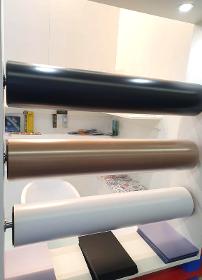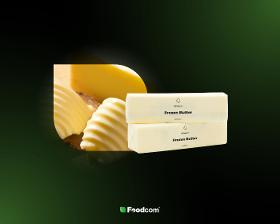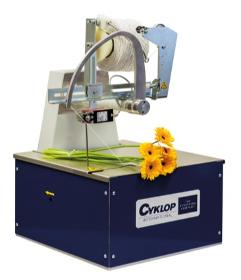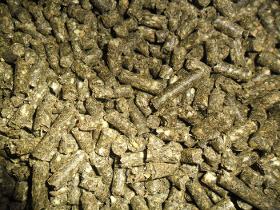- europages
- >
- COMPANIES - SUPPLIERS - SERVICE PROVIDERS
- >
- vegetable products
Results for
Vegetable products - Import export

BARRIER VACUUM BAGS
Romania
Laminated films with barrier are specially designed for use on high-speed horizontal or vertical flow-pack machines. Almost all of these films are delivered with AF treatment and can be printed flexo or roto sandwich type. They are used for packing several kinds of products: Emmental cheese, raw-dried meat products, coffee, pet food, bakery products, generally for bulk products or low humidity products. NON-BARRIER OR MEDIUM BARRIER FILMS They are used for the packaging of products which do not require special storage conditions, or which maintain their shelf life without the need for special properties of the packaging. They can be configured in a very wide range of structures depending on their application and the particularities of each packaged product and are used for fresh or frozen vegetables, bakery products, chips, raw-dried salamis, frozen fish, etc. They can be delivered with the AF option and can be customized by roto or flexo printing.
Request for a quote
FOODCOM S.A.
Poland
Native Potato Starch is a gluten-free powder that is derived from potatoes through a process of rinsing, cleaning, drying, and sieving. This product is suitable for individuals who are sensitive to gluten and can be used to modify the texture of food without altering its taste. Native Potato Starch has excellent binding and moisture-retaining properties, making it a popular ingredient in the bakery industry. It should be stored in a clean, dry, and well-ventilated area and has a shelf life of up to 5 years. Foodcom S.A. supplies Native Potato Starch in 25 kg packs and Big Bags. Native Potato Starch is a versatile ingredient and food additive that can be used in various food preparations, including meat and deli items, canned vegetables, bread and flour products, desserts, soups, sauces, puddings, and jellies.
Request for a quote
FOODCOM S.A.
Poland
The name butter is reserved for products without vegetable fat admixtures with a specific milk fat content - at least 82% (not more than 16% water and 2% dry non-fat milk). It is made by churning fresh or fermented cream or milk, to separate the butterfat from the buttermilk. The product is rich in vitamins A, D, K.
Request for a quote
PACKAGING TECHNICS & TRADE INTERNATIONAL
Netherlands
The Cyklop binders are the best in the market! Many years of expirience makes sure you will get a relaiable machine. Up to 4000 bindings per hour are possible. Different types of elastic are available, also for softer fruits.
Request for a quote
DE SMET ENGINEERS & CONTRACTORS
Belgium
De Smet Engineers & Contractors has been involved in all steps of the production of vegetable oils from oilseeds crushing for the construction of Edible Oils Plants; in this article you will find a more detailed understanding about the process of vegetable oil extraction: First step: Preparation of the oil containing material prior to solvent extraction Cleaning and Drying The plant feedstock must be cleaned so that foreign matters are removed. This applies particularly to sand/silicate and iron which may damage the preparation plant equipment. For some seeds or for some processes the incoming material moisture must be controlled and adjusted for better efficiency of subsequent operations. Mechanical preparation Most of raw materials needs to broken to reduce the particle size to ensure proper cooking and flaking. They are then heated in cooking / conditioning equipment and their moisture further controlled in addition to be softened before the next mechanical operations. After cooking, heated grits are flaked so that the oil cells are broken and the oil more readily available for further solvent extraction or mechanical pressing. Pressing Oilseeds containing above 20 to 25% (rapeseed, sunflower seeds, cottonseeds...) are generally pressed mechanically in order to extract most or part of the oil available in the feedstock. This operation is done through full pressing for maximum oil recovery leaving up to 5 to 10% in the final cake which is marketed as such or through a low pressure pre-pressing operation producing a cake with higher residual oil content which is then recovered in the solvent extraction plant. Dehulling Oil extraction plants produce a solid finished product in addition to the extracted oil; this product (cake or meal) is normally used as an important component for animal feed recipes. Depending on the meal destination, its protein content often needs to be increased and its fibre content minimized. Such characteristics are generally achieved through decortication or dehulling operations that separate the outer part of the feedstock before extracting the oil. Second step: Solvent extraction of the material suitably prepared Extraction In the solvent extractor, solids (Flakes from the flaking machines or cakes from the pre-presses) are conveyed through the equipment while a mixture of hexane and oil (miscella) is sprayed counter-current. The extractor produces therefore deoiled solids containing solvent and miscella. Desolventization Deoiled solids coming out of the extractor are conveyed to a dedicated equipment that completely removes the remaining solvent while preserving the meal quality: the desolventizer. This apparatus is usually combined with additional sections for drying and cooling the meal to the required storage and market parameters. Miscella distillation Solvent contained in the miscella is completely removed under vacuum and optimum temperature for preserving oil quality. The solvent from the distillation as well as the one removed at meal desolventization stage are then recycled to the extractor. Solvent recovery Since the air entering the process together with material fed to the extractor is laden with solvent when it is removed from the plant it first pass through a specially designed absorption column to limit emission to an acceptable level. Meal treatment The extracted meal is often subject for further treatment, including grinding to obtain the required granulometry or pelletizing to reduce its volume during transport.
Request for a quoteDo you sell or make similar products?
Sign up to europages and have your products listed

VNESHTORG-RUS LLC
Russia
Meal is a valuable high-protein feed product.Meal is a by-product obtained in the production of vegetable oils, after pressing and extraction of oilseeds. A valuable feed, which contains 36-38% of raw protein, amino acids and methionine, which favorably affects the growth and development of young animals. It is irreplaceable as a high-protein additive in the production of compound feeds for poultry and animal husbandry. It contains vitamins E and B, fiber, natural proteins, potassium, phosphorus and other minerals.
Request for a quoteResults for
Vegetable products - Import exportNumber of results
7 ProductsCompany type